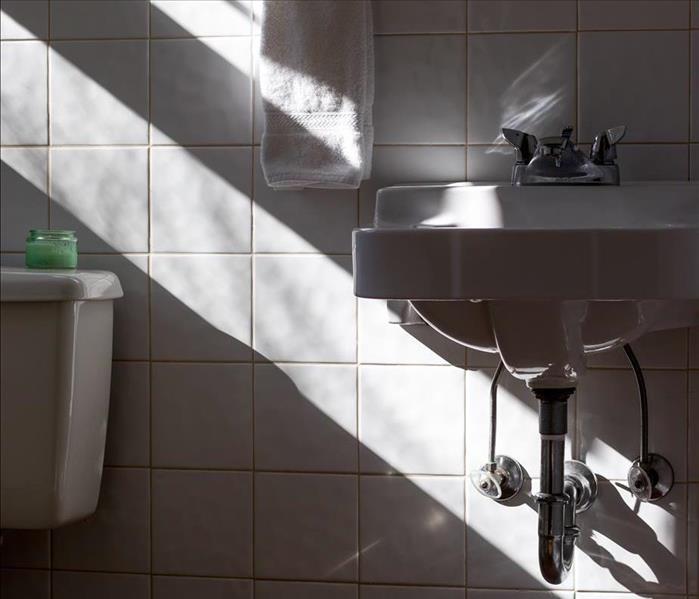Bathroom Mold: A Growing Concern
7/14/2020 (Permalink)
 Set up your inspection and mold damage assessment by calling us at (717) 510-6779. Our mold remediation specialists will provide expert, reliable help
Set up your inspection and mold damage assessment by calling us at (717) 510-6779. Our mold remediation specialists will provide expert, reliable help
Habitually filled with moisture and humidity, it’s no wonder mold is so drawn to bathrooms. These two characteristics present prime conditions for mold growth. Mold can grow exponentially in as few as 24 hours in optimal conditions, which can bring about major damage. Because mold infestations can negatively affect not only the safety of your bathroom, but the health of those in your home as well, taking preventative measures against mold growth is critical. The first step is to develop an understanding of how and why mold grows in bathrooms.
Understanding the Causes of Bathroom Mold Growth
Lack of ventilation is one of the top reasons as to why mold can grow so easily in bathrooms. After taking a bath or shower, moisture has a habit of lingering on walls and other surfaces. Mold growth is facilitated if that moisture sits idly and isn’t dried. Additionally, fabric materials in the bathroom, such as bath rugs and towels, can become damp after a bath or shower, which increases the chances of mold growing on those surfaces. Finally, leaking plumbing, sinks, and toilets can cause moisture to accumulate in isolated areas, risking mold growth.
How to Prevent Mold Growth
Due to bathrooms’ constant exposure to water, eliminating moisture altogether is unreasonable. However, there are various ways in which you can reduce the chances of mold growth in your bathroom. Get into the habit of turning on your bathroom fan for a minimum of 30 minutes after every bath or shower in order to increase ventilation. It is also important that humidity levels in the home stay below 45% in an effort to reduce humidity in your bathroom. Bath towels, rugs, and other fabrics can be washed frequently to combat the risk of mold growth. Regularly check plumbing for leaks so that if a leak forms, you can bring it to a halt before it can do any serious damage. In an effort to prevent moisture from lingering after a bath or shower, consider using a squeegee to remove the moisture from shower walls.
What to Do If You Spot Mold Growth
Because mold commonly grows in dark, isolated, and hidden spots like corners and in between tile, it can sometimes be difficult to catch. In the event that you discover mold growth in your bathroom, it is imperative that you don’t touch the mold. Coming into contact with mold can cause health effects. Attempting to clean the mold or dry it out may seem like helpful steps, but they can actually cause mold spores to travel to other areas of the bathroom, increasing the severity of the mold problem. While all of this may seem scary, it’s important to remember that you don’t have to face your mold problem on your own. SERVPRO is here to help. Set up your inspection and mold damage assessment by calling us at (717) 510-6779. Our mold remediation specialists will provide expert, reliable help immediately so that your bathroom can return to a safe and clean condition as soon as possible. Visit https://www.SERVPROharrisburgwest.com/mold-remediation to learn more about our mold remediation services.





 24/7 Emergency Service
24/7 Emergency Service